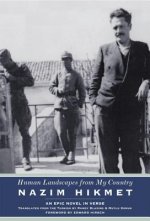
Code: 08242141
Organizational Change in the U.S. Customs and Border Protection Agency
by William J Griffith
The creation of the Customs and Border Protection (CBP) in 2003 was a monumental, yet incomplete organizational step towards integrating border protection operations. Customs and Border Protection is constantly improving integrati ... more
- Language:
 English
English - Binding: Paperback
- Number of pages: 56
Publisher: Biblioscholar, 2012
- More about this

You might also like
-

Sabbath Transferred
22.51 € -18 % -

Poetical Works of Robert Browning. (Biographical and Historical Notes to the Poems.) F.P.
26.47 € -19 % -

Eight Years in Canada, Embracing a Review of the Administrations of Lords Durham and Sydenham, Sir C. Bagot and Lord Metcalfe; And Including Numerous
22.51 € -18 % -

Oxford Advanced Learner's Dictionary: Hardback + DVD + Premium Online Access Code
83.98 € -

Fleta, Seu Commentarius Juris Anglicani
16.93 € -18 %
Give this book as a present today
- Order book and choose Gift Order.
- We will send you book gift voucher at once. You can give it out to anyone.
- Book will be send to donee, nothing more to care about.
More about Organizational Change in the U.S. Customs and Border Protection Agency
You get 150 loyalty points
 Book synopsis
Book synopsis
The creation of the Customs and Border Protection (CBP) in 2003 was a monumental, yet incomplete organizational step towards integrating border protection operations. Customs and Border Protection is constantly improving integration and unity of effort among its operational components: the Office of Field Operations (OFO), Office of Border Patrol (OBP), and the Office of Air and Marine (OAM). In October 2010, Homeland Security Secretary Napolitano approved CBP Commissioner Bersin's request to initiate a Joint Field Command (JFC) configuration modeled on Department of Defense regional unified commands. A JFC groups all elements of OFO, OBP, and OAM in a defined geographical area under one regional commander and headquarters. Although CBP has not conducted a formal assessment of the first JFC in Arizona, confusion surrounds the appropriateness of joint configurations in CBP and any decision to continue implementation across the organization. The question is, is the CBP effort likely to succeed? Joint Field Command - Arizona is only a year old so there are no meaningful empirical measures of effectiveness available. Therefore, this study drew from organization theory to determine why CBP needed to change, to assess the change itself (the JFC), and to examine CBP's implementation of the change. Henry Mintzberg's typology regarding basic organizational configurations provides a means to classify CBP's structure and establish the requirement for change. Insight from organizational design theorists, homeland security experts, and military strategist Everett Dolman provide a valid framework for assessing how well the JFC meets CBP's requirements. Models of organizational change, like the Burke-Litwin model, facilitate an assessment of CBP's transformation because they identify factors influencing the durability and acceptance of reforms. As a functionally diversified organization, CBP represents only a superficial integration of border security agencies because the configu
 Book details
Book details
Book category Books in English Society & social sciences Education
60.25 €
- Full title: Organizational Change in the U.S. Customs and Border Protection Agency
- Author: William J Griffith
- Language:
 English
English - Binding: Paperback
- Number of pages: 56
- EAN: 9781288299935
- ISBN: 9781288299935
- ID: 08242141
- Publisher: Biblioscholar
- Weight: 118 g
- Dimensions: 246 × 189 × 3 mm
- Date of publishing: 15. November 2012
Trending among others
-

Cambridge IGCSE (R) & O Level Complete Chemistry: Student Book Fourth Edition
42.49 € -

Oxford IB Diploma Programme: IB Theory of Knowledge Course Book
63.29 € -

KS3 Maths 10-Minute Weekly Workouts - Year 8
8 € -9 % -

KS3 Maths 10-Minute Weekly Workouts - Year 7
8 € -9 % -

Oxford IB Diploma Programme: IB Economics Course Book
62.28 € -

Business Partner B1+ Workbook
16.83 € -4 % -

Speed and Accuracy: Multiplication
8.61 € -

Cambridge IGCSE (R) & O Level Complete Physics: Student Book Fourth Edition
38.74 € -

OET Preparation
9.73 € -

Pearson Edexcel International GCSE (9-1) English Language B Student Book
50.71 € -

Speed and Accuracy: Division
8.61 € -

Read Write Inc. Phonics: Red Ditty Book Bag Books (Mixed Pack of 10)
74.96 € -

Dancing Heads
13.08 € -19 % -

Freiarbeitsmaterial für die Grundschule - Deutsch - Klasse 1/2
23.02 € -4 % -

Business Partner B1 Workbook
17.44 € -9 % -

Business Partner B2 Workbook
16.83 € -4 % -

Blue Book of Grammar and Punctuation: An Easy- to-Use Guide with Clear Rules, Real-World Examples , and Reproducible Quizzes, Twelfth Edition
15.10 € -29 % -

Grade 9-1 GCSE Maths AQA Revision Question Cards - Higher
10.13 € -4 % -

Positive Discipline Tools for Teachers
15.51 € -19 % -

Pearson Edexcel AS and A level Mathematics Statistics & Mechanics Year 1/AS Textbook + e-book
17.95 € -

(ISC) SSCP SG & SSCP Practice Test Kit, 3e
65.42 € -28 % -

Motivation and Reinforcement
46.45 € -

Imagine If...
10.95 € -23 % -

Vertical Academy
36.71 € -

OET Reading Subtest Preparation
12.67 € -7 % -

Oxford International Primary Maths Second Edition: Practice Book 1
16.12 € -

Vol 2 Blackletter Lettering Adventures
25.35 € -2 % -

AS & A Level Maths For Dummies
17.34 € -28 % -

CompTIA Security+ Review Guide - Exam SY0-601
24.84 € -24 % -

Forensic Linguistics Articles
15.31 € -

Practical Guide on Veterinary First Aid using Homeopathy
14.90 € -2 % -

Abolition of Man
18.66 € -2 % -

Human Landscapes from My Country
29.81 € -19 % -

Corrected Squares of The Book of Abramelin
532.57 € -

Hanbo Jutsu: Use of Hanbo, Cane and Walking Stick for Self Defense
11.35 € -

Reading Mind - A Cognitive Approach to Understanding How the Mind Reads
21.50 € -28 % -

Exam Prep for Microeconomics by Pindyck & Rubinfeld, 6th Ed.
40.47 € -

North Korea's Military Threat
25.65 € -

English Language & Literature WORKBOOK: York Notes for GCSE (9-1)
9.02 € -9 % -

Release Your Inner Drive
15.21 € -18 % -

Effect of Registration Errors on Tracking in a Networked Radar System
60.25 € -

Princeton Review SAT Premium Prep, 2021
45.23 € -

CEH v11 Certified Ethical Hacker Study Guide + Practice Tests Set
75.36 € -5 % -

10 Practice Tests for the SAT, 2021 Edition
33.47 € -

OCP Oracle Certified Professional Java SE 11 Programmer II Study Guide - Exam 1Z0-816 and Exam 1Z0-817
49.90 € -5 % -

Scrum - A Pocket Guide - 2nd edition
34.48 € -

Powerful Teaching: Unleash the Science of Learning
28.80 € -20 % -

Physics for You
51.73 € -

Oxford IB Study Guides: Economics for the IB Diploma
44.02 €
Collection points Bratislava a 2642 dalších
Copyright ©2008-24 najlacnejsie-knihy.sk All rights reservedPrivacyCookies



 15549 collection points
15549 collection points Delivery 2.99 €
Delivery 2.99 € 02/210 210 99 (8-15.30h)
02/210 210 99 (8-15.30h)